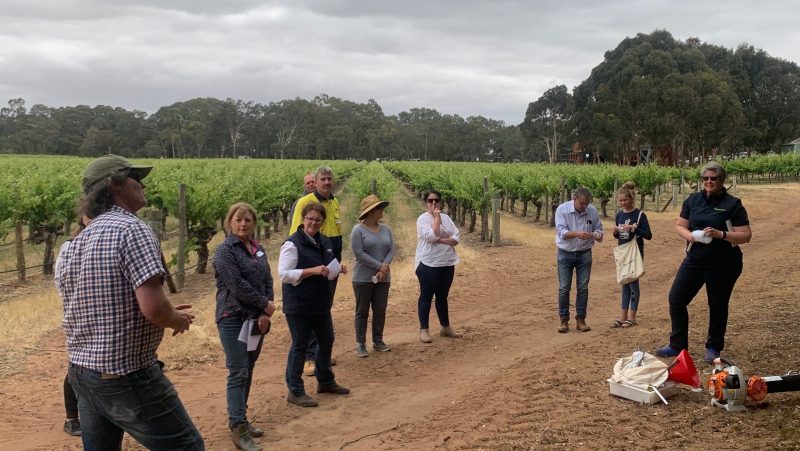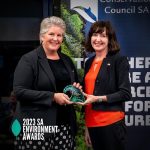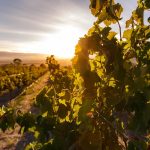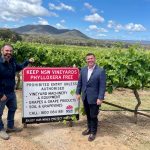In September, viticultural consultant Dr Mary Retallack presented her research on native plant species that could aid in the reduction of vineyard pest insect infestations at the Adelaide Hills Natural Resource Centre.
Since then, a new project has been developed to aid growers in South Australia’s prominent wine regions build resilience to pest insects naturally by planting native flora.
Journalist Samuel Squire chatted to Dr Retallack about the EcoVineyards project and the producers taking part in the program.
The EcoVineyards project is an initiative born from the partnership between the Wine Grape Council of South Australia and Retallack Viticulture, giving growers across the state the information to build natural resilience to insect pests in their vineyards.
The main principle of the project is for growers to introduce native plant species into their vineyards to support populations of beneficial insect predators that will contribute to the biological control of vineyard pests.
The inclusion of insect predator species in vineyards can potentially lead to reduced input costs, a reduction in the use of chemicals and an overall improvement in the environmental sustainability of Australian wine regions.
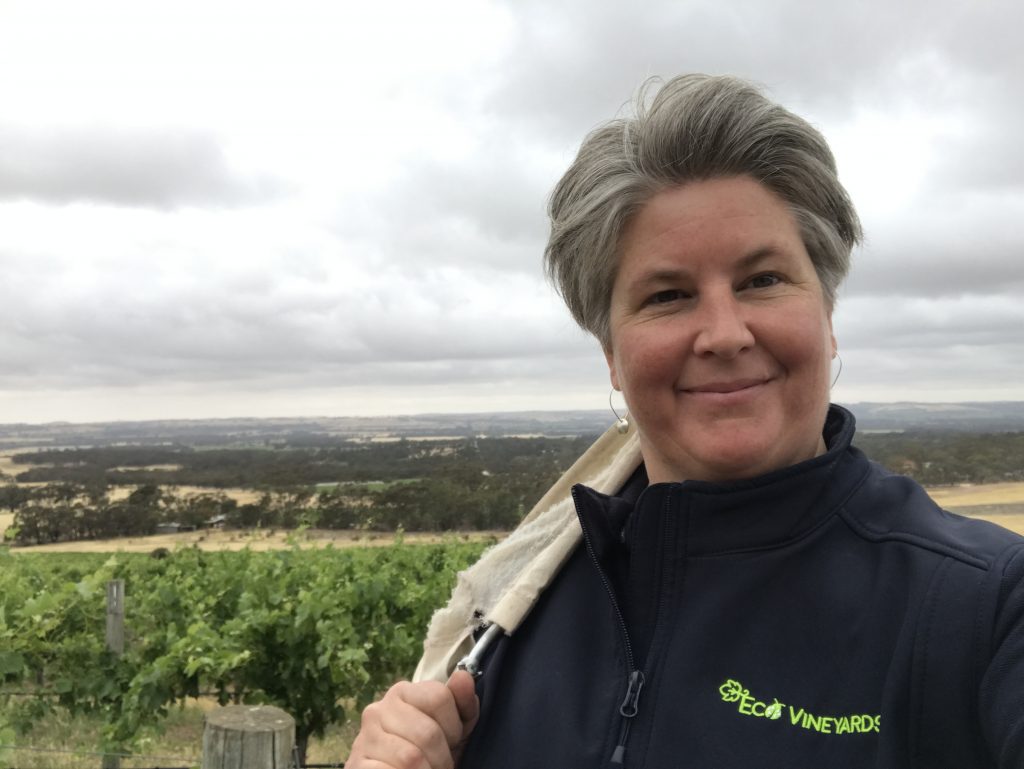
Dr Mary Retallack, managing director of Retallack Viticulture, believes that planting native species like Christmas bush, wallaby grasses and prickly tea-trees all help in the growth of insect predator species populations in vineyards.
“These three species of native plants will aid in the development of insect predator populations or ‘good bugs’ in the vineyard and will act to enhance the biocontrol of pests,” Retallack said.
“Using this method is by far one of the easiest, most practical and natural ways, from my research, to build resilience to pest insect infestations in the vineyard during the grapegrowing periods.
“The main idea of the project is to look at ways we can start building functional biodiversity and move away from the old- fashioned idea of a monoculture ecosystem – we are aiming to future-proof our vineyards.”
So far, 24 vineyards across South Australia’s eight major wine regions have signed up to the program as ‘eco-growers’.
They will introduce a range of native plants to their vineyards to boost insect predator species’ populations and build resilience to harmful pests.
One of the producers taking part is Mount Barker’s Ngeringa Vineyards, which has been certified biodynamic since the late 1980s. The site is also organic and its operators have been making progress revegetating its land for some time.
Ngeringa Vineyards founder Janet Klein said the project is a great way to help increase bio-resilience to pest insects and reduce the overall impact of harmful chemicals in the vineyard.
Monitoring the results of native grasses
Klein said that her aim under the project is to trial native grasses in the vineyard and to monitor the results to determine how beneficial these are.
“Since establishing our vineyard in 2001, we have planted between 500 and 1000 native seedlings from our local area each year, adjacent to the vineyard and across the property, to bring a health and balance back to what was heavily cleared and grazed farmland,” she said.
“Due to our extensive revegetation efforts since then, this program can only add more benefits to the ecosystem and we’re really excited to be a part of the EcoVineyards project.
“The project offers us at Ngeringa the opportunity to trial the challenge of planting native grasses within an organic vineyard system. The biggest challenge lies in how native grasses are easily dominated by the faster growing European weeds.
“Next autumn, we will be planting wallaby grass and a multi-species mix in the midrow and under-vine of our Summit Vineyard to see how they establish comparatively to each other and under either a tilled or organic-herbicided treatment,” she added.
Dr Retallack commented that the EcoVineyards project will provide a whole range of benefits to grapegrowers and other industries beyond the wine sector.
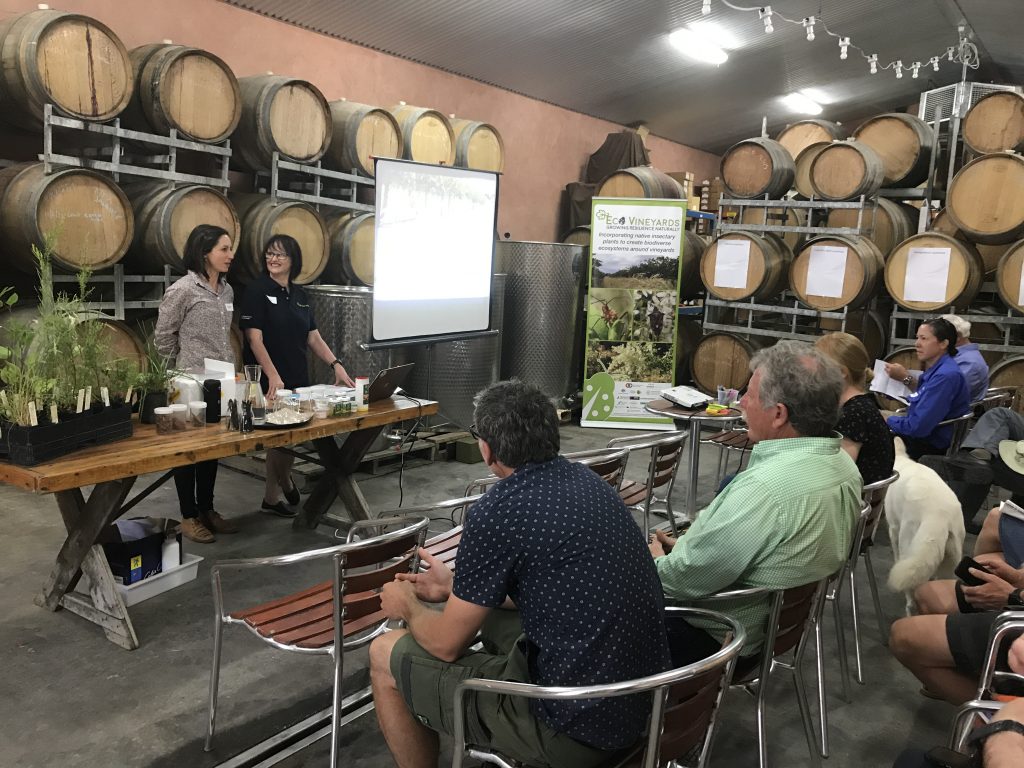
“One of the key challenges growers face is economically managing pests in the vineyard. The principle of the EcoVineyards project is to help growers naturally build resilience to pest infestations and, ultimately, keep our wine to the highest standard it can reach,” she said.
“The project will also enable growers to understand native vegetation which will allow them to work smarter, not harder, with less vineyard intervention,” she said.
Moving away from ‘harmful pesticides’
“The plants will attract insect predators that feed on pest insects. By providing this habitat for good bugs, growers can save a lot of time and money on physical and chemical intrusion and move away from harmful pesticides and herbicides.”
At Tintookie Vineyard at Blewitt Springs, owner Lulu Lunn said changing the way vineyards develop resistance to pests will only benefit them in the long run.
“I have been trying to change the way we do things at Tintookie for years. We have managed to turn about a third of the vineyard organic, but eventually, my plan is for the whole vineyard to become organic,” she said.
“Using native plants to create a habitat for insect predators is going to help the vineyard become more resilient to pests and it will provide us with an easier way to reduce using chemicals and be that much closer to being fully organic.
Lunn said that her current vineyard management has been fairly minimal in terms of intervention and pest management, but her vision for integrating native plants into the vineyard is the way to make that method more viable.
“To date, Tintookie hasn’t had much in the line of pest resilience, whether chemical or natural. Mainly, I think that’s to do with the birds in the area – there are quite a lot of them,” she explained.
“Although the pests have never bothered me personally, but that’s because I have a fairly high tolerance to deal with them.
“So far, I have planted Christmas bushes at the ends of the vine rows and have plans to start planting in between the rows and under-vine as well.”
Lunn said that she had cleared a section of her land a few years ago to make way for planting trees and other native vegetation that will also assist the EcoVineyards project in her vineyard.
“I cleared some of my Chardonnay vines out a few years ago and started planting trees to give insectary species a home over winter,” she said.
Lunn believes that the scheduled run-time of the EcoVineyards project may not be long enough to fully implement native plant species into eco-growers’ vineyards.
“I think that in the few years this project has to run, by the end of it, the eco-growers are still going to be in the early stages since introducing the plants into their lands,” she said.
“These plants take time and effort to grow properly and then it’s a waiting game until the good bugs set up shop where you need them to be.”
Dr Retallack said that the practical applications of her research has the potential to extend beyond the EcoVineyards project to other states’ winegrape producers and even to other sectors of agriculture.
“Currently, there are more than 3,000 growers in South Australia that have the capacity to benefit from the project and 24 sites across the eight major wine regions in South Australia being demonstrators. The project doesn’t just have applications in South Australia, though,” she said.
“I think this general concept can be rolled out across other states easily and other sectors of agriculture, like growing apples or other fruits. Whatever the case may be, the same principles apply.”
To find out more about the EcoVineyards project or how you can be involved, visit https://www.wgcsa.com.au/ecovineyards.html.
This article was originally published in the February issue of The Australian & New Zealand Grapegrower & Winemaker. To find out more about our monthly magazine, or to subscribe, click here!
